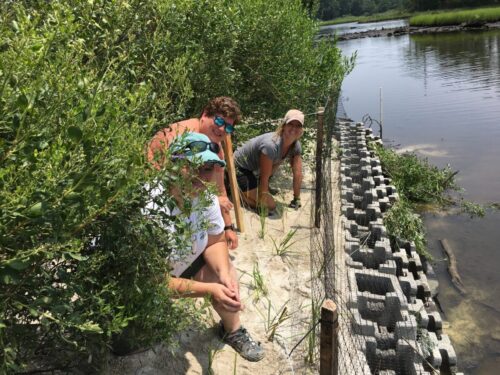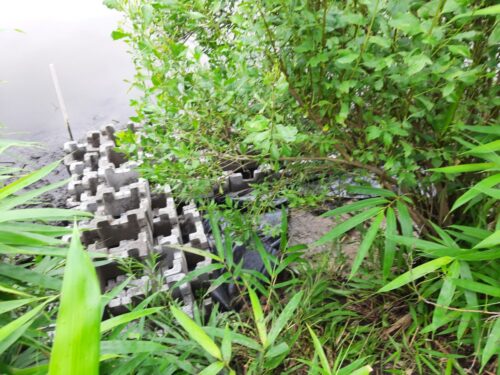S.O.S. – Save Our Shorelines!
August 3, 2021 2:00 am

By Kendall Topping, DOF Community Forester
As rapid development and population growth continue in Hampton Roads, stormwater runoff and sea level rise have become more prevalent concerns. One of the direct effects of these issues includes more drastic shoreline and streambank erosion. Such extreme cases of erosion lead to unstable ground, forcing landowners to lose valuable land while making certain land uses impossible. This causes not only environmental, but also social and economic issues for counties and local landowners, as businesses, homes, and ecosystems may be lost when their foundations wash away.
In forested areas, the Department of Forestry’s solutions for erosion often include riparian buffers and other best management practices. These are excellent options for large swaths of rural land without the constraints of urbanization. However, in the urban forests with smaller land parcels, especially in coastal areas, installing trees alone is not a viable option. Cities often install hardscapes, such as bulkheads and concrete piers, to prevent further shoreline erosion and land loss. However, these have a finite lifespan and contribute to the loss of tidal wetlands and natural buffers.
Another natural option for coastal areas is installing living shorelines. A living shoreline is defined by NOAA as a stabilized and protected shoreline constructed of natural materials in conjunction with hardscaped shoreline structures. This includes grading a slope and incorporating natural elements such as plants, sand, and rock.

Living shoreline
The hardscaped structures consist of interlocked concrete blocks made with organic elements, such as oyster shells. These are commonly referred to as oyster castles, due to their ability to attract oyster settlements and attachment. These blocks are constructed together to encase the eroding property, protecting the land from waves and stream flows. The shoreline behind the castles is then filled in with sand and densely planted with native marsh grasses, shrubs, and eventually trees farther inland.

Volunteers installed this living shoreline along Great Neck Creek.
Recently, I worked with the local nonprofit Lynnhaven River NOW and local business Bay Environmental to install one of these shorelines in Great Neck Creek, in North Virginia Beach. The shoreline was installed to reduce erosion and sedimentation while increasing biodiversity in the watershed. More than twenty volunteers helped install the project. Seeing its construction helped to cement the reality that these projects are as vital as riparian buffers. Without these manufactured wetlands, there would be little to no land left for trees. Though trees and riparian buffers are just a small part of the construction of living shoreline construction, they play a large role in protecting our urban forests.
Tags: Urban Forestry, Water Quality
Category: Urban and Community Forestry, Water Quality
